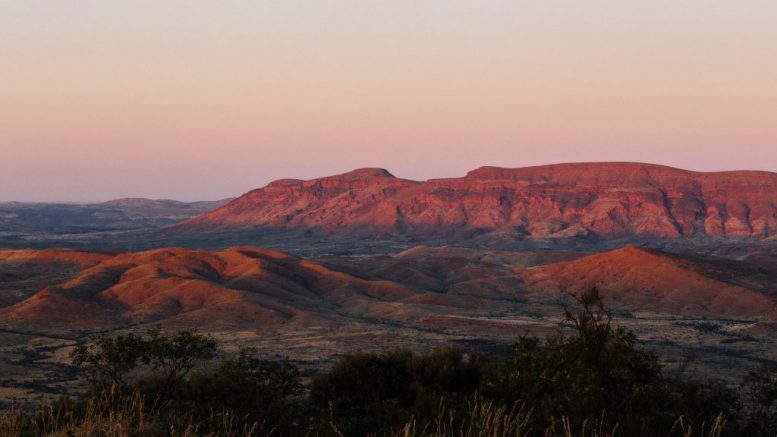Rio Tinto (NYSE: RIO; LSE: RIO) CEO Jean-Sébastien Jacques will step down by the end of March next year over a mounting backlash against the company’s decision to destroy ancient Aboriginal heritage sites in Western Australia.
The world’s second-largest miner said two other senior executives — iron ore boss Chris Salisbury and corporate affairs head Simone Niven, who had responsibility for Indigenous affairs — will also leave the company.
The high-profile departures come four years after Rio Tinto swept out its veteran managers to make way for a new generation of business leaders. The changes are a direct result of shareholder and public outcry over the May destruction of a 46,000-year-old archaeological site, despite the opposition of Aboriginal traditional owners.
Jacques will leave once his successor is chosen, or at the end of next March, whichever date comes first. Salisbury’s termination is effective immediately, Rio Tinto said.
Ivan Vella, managing director for rail, port and core services within Rio Tinto Iron Ore, will replace Salisbury on an interim basis.
Niven, in turn, will step down on Dec. 31, after “completing an orderly transition of her responsibilities,” the board said.

Jean-Sébastien Jacques. Credit: Rio Tinto
Jacques’ appearance before a Parliamentary inquiry in August failed to quell questions about the company’s intent relating to the destruction of the sites. He said the company was not aware of the importance of the caves prior to them being blown up.
He also noted that removing the landmarks would likely deliver about US$135 million in extra value to Rio’s iron ore division, a unit that generated underlying earnings of US$9.6 billion in 2019.
The outgoing chief also confirmed the region’s traditional landowners, the Puutu Kunti Kurrama and Pinikura Aboriginal Corporation, didn’t know that the company had been considering three alternative options that could have avoided damaging the Juukan Gorge sites.
Rio was granted approval for work at the Brockman 4 iron ore project in 2013. Subsequent archaeological excavation revealed ancient artifacts at the site, including grinding stones and a bone sharpened into a tool.
“At last we are seeing some proper accountability at the top for Rio Tinto’s destruction of Juukan Gorge,” Keren Adams, legal director at the Human Rights Law Centre, said in a statement. “The company’s initial response of docking executives’ bonuses was patently inadequate given the significance of the site.”
The group had decided in August to cut short-term bonuses of Jacques, Salisbury and other executives following an internal review of the events that took place on May 24, while carrying out work to expand Rio’s iron ore operation.
The move further enraged critics.
Adams added that the miner’s actions at Juukan Gorge were not an aberration, but rather symptomatic of “a broader culture of disregard for communities’ rights and cultural heritage.”
“Over the past few years, Rio Tinto has been the subject of serious human rights complaints by communities impacted by its operations in a number of different countries.
“In Bougainville, for instance, communities are also facing destruction of their sacred sites as well as serious pollution of their land and water sources,” Adams said.
“This situation has demonstrated beyond doubt the importance of companies’ boards and executives protecting their social license,” said Brynn O’Brien, activist and executive director of the Australasian Center for Corporate Responsibility.
“It should be a wakeup call for the Australian iron ore sector and mining companies worldwide on their relationships with First Nations people.”
“[The destroyed sites] were not only extremely important sites for Aboriginal communities, but also for archaeological understanding of the distant past in Australia,” Peter Stone, the UNESCO chair in Cultural Property Protection and Peace at Newcastle University in the U.K., said in June.
Rio Tinto has said it plans to add a new social performance function to monitor its approach to community and heritage practices. It will also include processes to escalate heritage issues to senior management.
The consequences of the controversial damage to Juukan Gorge rock shelters have reached competitors. The world’s largest miner, BHP (NYSE: BHP; LSE: BHP), and Fortescue Metals Group are now both reviewing plans that could threaten sacred sites in Australia as they step up talks with traditional owners.
With no obvious internal successor for Jacques, analysts agree that Rio will likely search outside the company for its next boss.
Some, however, believe the company may consider the head of copper and diamonds, Arnaud Soirat, or Alf Barrios, who runs the aluminium division, for the top job.
In addition to fixing the damaged relationship with Australian landowners, the new chief executive will be tasked with addressing alleged corruption in Guinea to obtain rights to the massive Simandou iron ore deposit, and the delay and increasing costs of Oyu Tolgoi’s underground expansion.


Be the first to comment on "Rio Tinto CEO resigns over Aboriginal site blasts"